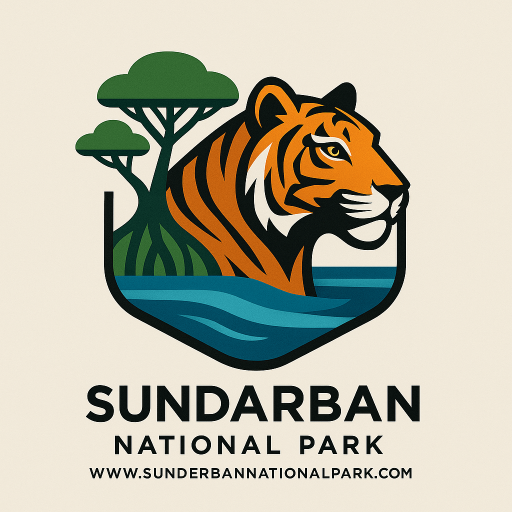About Sunderban National Park
Information about Sunderban National Park
Located in the southeastern tip of West Bengal’s 24 Paraganas district, Sundarban National Park derives its name from the Sundari tree (Heritiera minor), a vital part of its mangrove ecosystem. Spanning 4,262 sq. km, it forms part of the world’s largest delta created by the Ganges, Brahmaputra, and Meghna rivers. Of this, 2,585 sq. km is designated as India’s largest Tiger Reserve and National Park. The region comprises 56 islands, interlaced with tidal waterways and mudflats, and includes a buffer zone of 885 sq. km, showcasing extraordinary biodiversity.

Wildlife and Attractions
The park is famed for its Royal Bengal Tigers, uniquely adapted to the estuarine environment. Other notable species include Monitor Lizards, Estuarine Crocodiles, and Olive Ridley Turtles, which are part of a conservation program. Species like the Leopard, Indian Rhinoceros, Swamp Deer, and Water Buffalo once found here are now locally extinct.
Interesting Facts You Must Know about Sundarban Forest
Discover the Sundarbans: Nature’s Untamed Masterpiece
The Sundarbans, a UNESCO World Heritage Site, is a land of enchantment, where dense mangrove forests meet the mysteries of the wild. Straddling India and Bangladesh, it is home to the world’s largest mangrove ecosystem and the legendary Royal Bengal Tiger. For wildlife lovers and adventure seekers, a journey into the Sundarbans is truly a dream come true.
A UNESCO World Heritage Site
Designated in 1987, Sundarbans National Park earned its UNESCO status for its extraordinary biodiversity and its vital role in conserving the Royal Bengal Tiger under the Project Tiger initiative
The World’s Largest Delta
Formed by the Ganga, Brahmaputra, and Meghna rivers, the Sundarbans is part of the planet’s largest and most dynamic delta, where land continuously forms and erodes, giving rise to a unique ecosystem.
The Realm of the Royal Bengal Tiger
Known locally as the Swamp Tiger, this elusive predator has adapted to swimming and thriving in the mangrove habitat. The 2019–2020 census recorded 102 tigers, a testament to successful conservation efforts.
102 Islands, 54 Inhabited
The Sundarbans is a sprawling archipelago of 102 islands, with 54 inhabited by local communities. A maze of rivers, creeks, and mangroves connects these islands, creating one of the most picturesque natural settings on Earth.
Bono Bibi: The Guardian of the Forest
The Bono Bibi Festival, featuring traditional folk dramas (Bono Bibi Pala), is a cultural highlight of the region.
The Sundari Tree & the Name “Sundarbans”
The forest derives its name from the Sundari tree (Heritiera fomes), a key mangrove species. In Bengali, Sundar means beautiful and ban means forest, symbolizing the “Beautiful Forest.”
A Vital Ecosystem
The Sundarbans’ mangroves act as natural storm barriers, protect against soil erosion, and help in carbon absorption.
India’s Largest Fishery Board
Spanning 50 hectares, the Sundarbans hosts the country’s largest fishery board, specializing in brackish water aquaculture, vital to regional food security and biodiversity.
A History That Dates Back Centuries
Human activity in the Sundarbans dates back to 200–300 AD. The region has a rich history involving Portuguese pirates, salt smugglers, and remnants of Mughal ruins like Netidhopani.
A Biodiversity Hotspot
The Indian Sundarban, located in West Bengal’s Ganga delta, is a unique and fragile ecosystem. This littoral tract, shaped by tidal waves from the Bay of Bengal, is home to a diverse wild mangrove ecosystem that links terrestrial and marine environments. The delta’s lower part experiences daily shifts between freshwater from the Hugli River and brackish tidal flows. Beyond the untouched forest, an agricultural landscape with freshwater ponds exists.
Best Season: The ideal time to visit Sundarban National Park is winter, from December to February, though it remains open from September to March. This period also attracts the maximum number of migratory birds.
Access: The park is best reached via Kolkata Airport, with Canning as the nearest railway station and Gosaba as the closest town. From Canning, a 5-hour country motor launch takes you to Sajnekhali, the park headquarters.
